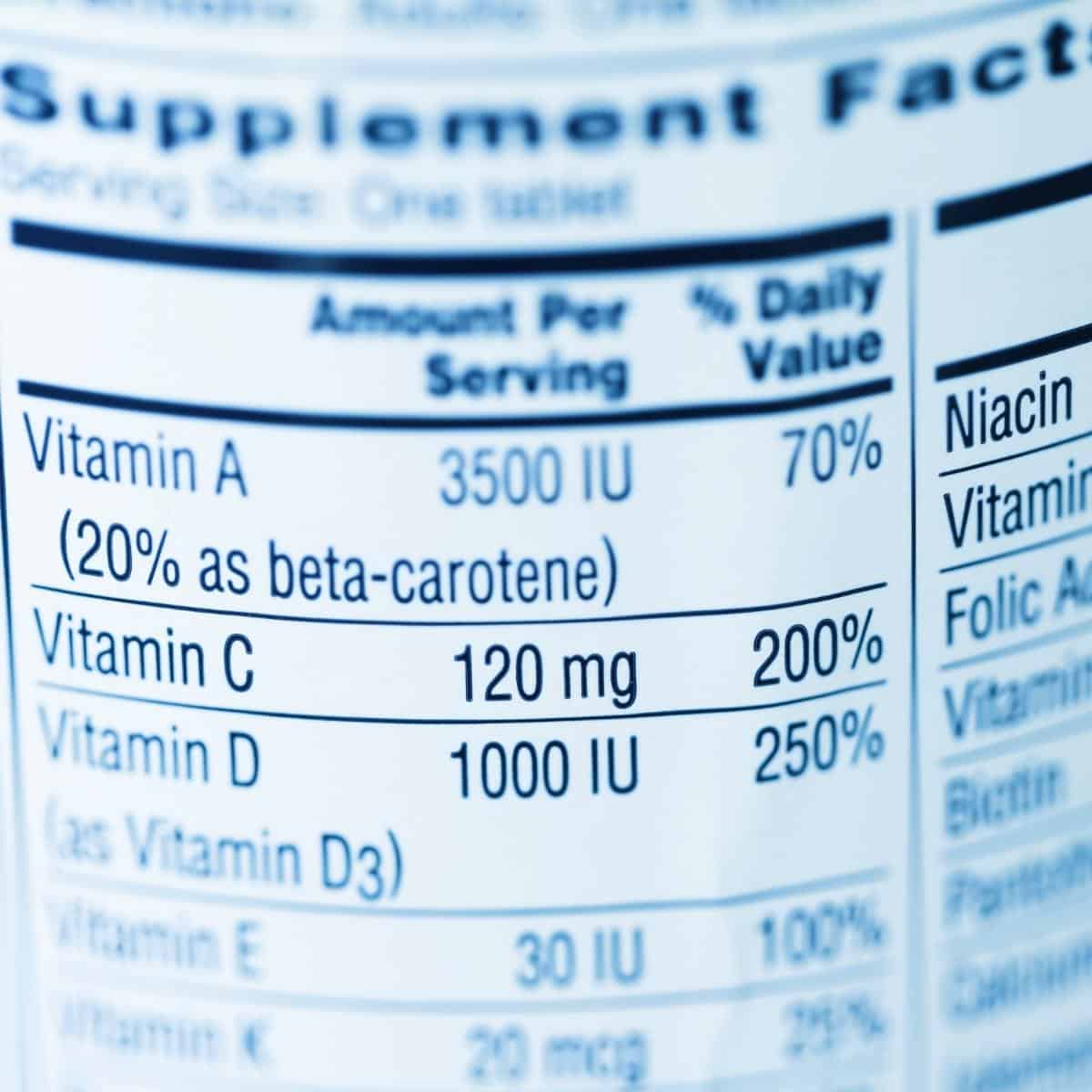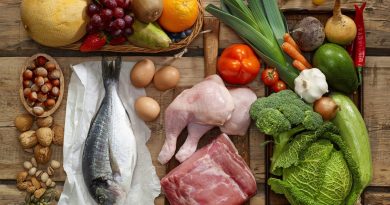Is A Premium Dog Food Really That Much Better For Your Dog?
==========The Scoop on Premium Dog Food========
If you’re interested in premium dog food, then I probably don’t have to tell you about the importance of diet in keeping your dog active and healthy. You already know you want something better than “average” for your furry friend.
But how much do you know about what’s in premium food and what your particular pet’s needs are? I’m no veterinarian but I do know a thing or two about health and nutrition. (As a family dentist who practiced for twenty years, I saw firsthand the effects of poor dietary habits on human health — and particularly on human teeth!!).
Like you, your dog has to deal with the effects of stress, age, exertion, a polluted environment, and foods grown in nutrient-depleted soils. Unlike you, he has to get practically all of his nutrition from a single food. Sure, you may give him a few treats or the occasional table scrap (not too many I hope!), but otherwise, he’s eating out of the same bag or can day in and day out. You want him to get complete nutrition out of that one food.
===========Complete Nutrition?===============
Even the experts seem to disagree on exactly what complete nutrition is. Maybe this explains why there are so many formulas for premium dog food out there. There’s one thing they do agree on, though: premium dog food is better for your pet than the economy and grocery store brands. Although you’ll pay more, it usually holds that you get what you pay for.
Experts also agree that, because premium foods are more nutritionally dense and easier to digest, your dog won’t need to eat as much. One study even concluded that if you fed your dog the recommended amounts on each package, you’d end up saving money on the premium formulas. That’s because your dog needs to eat a lot less of it. (You’ll save on pooper scoopers too!)
Another way to know if your dog is getting a proper diet is simply to observe him. Are his eyes bright, his coat silky and shiny, and his skin free from dryness and itching? Is he at a healthy weight? How about his energy level? This may vary from one animal to another, but as you get to know yours, you’ll know when your dog isn’t feeling up to par.
Of course, any persistent health problems should be looked into by your vet, and the same goes for any special dietary needs. But in general, you’ll know if your friend is doing well on the diet you’re feeding him. If you see signs that he isn’t, try a different formula or another brand of premium dog food.
Introduce new foods gradually, especially if you have a picky eater. And while we’re on that subject, it’s always nice if your dog enjoys eating his food. This has a lot less to do with taste than it does with the smell. Dogs have fewer taste buds than we do, but about 40 times as many scent receptors. So make sure he eats with gusto and doesn’t just pick at his food.
Here are some basic guidelines you can follow:
============Essential Nutrients=============
Every dog needs the right amounts of proteins, carbohydrates, fats, vitamins, minerals, and water. Your dog must have all these in the correct proportions to stay healthy. Needs vary with life stage, breed, and activity level. Dog food companies make premium dog food for all life stages, from puppy to senior. An average adult dog needs a daily intake of about five ounces for every ten pounds of weight, with essential nutrients in the following proportions:
Protein –23% of total intake
Fats –5% of total intake
Carbohydrates –65% of total intake
Additional vitamins and minerals your dog needs are Vitamins A, D, E, B-complex, Niacin, Biotin, Folic Acid, Choline, and Pantothenic Acid; Calcium, Phosphorus, Potassium, Sodium Chloride, Magnesium, Iron, Copper, Manganese, Zinc, Iodine, and Selenium.
It’s generally agreed that dogs do better on a protein source that’s primarily meat rather than soybeans and grains. Check the label. All US food labels must list ingredients in order of their quantity. If meat by-products are listed, they should come after the real meat, not before it.
Meat by-products are an inferior source of protein and are basically what remains after the good-quality meat has been removed. “Crude protein” can be a similarly poor source, since it may include parts of the animal that can’t even be digested or absorbed by the average dog (hair, beaks, etc.).
Omega fatty acids are a hot topic in human nutrition these days and are just as important in the canine diet. Both should be present and in the right ratio. Most premium dog food companies have researched this and adjusted the ratios, but as usual, ask your vet if you’re uncertain.
===========Wet vs. Dry============
You can buy premium dog food in just about any form, but which one is best? Again, most experts seem to agree. Dry food is less likely to allow plaque to accumulate on the teeth, less likely to harbor bacteria if left out too long, and results in firmer, more compact stools. Semi-moist foods are convenient but for some reason (I’m not sure what) don’t offer the same nutritional benefits as premium kibble or canned foods.
That said, I have also heard arguments suggesting that a diet of exclusively dry food can be a strain on a dog’s kidneys. So, to be on the safe side, check with your vet.
===========Life Stages============
Puppies need more calories and essential nutrients than adult dogs. They need up to twice as many calories per ounce of body weight and should get 25% to 30% of their energy from protein depending on the breed.
Most premium dog food brands take this into account in their puppy formulas, but it doesn’t hurt to check the label. By six to eight weeks of age a puppy should be fully weaned and eating his dry food consistently. After that, different breeds reach their mature weight at different rates, by anywhere from 9 months to 24 months old. So it’s hard to give an age or weight by which you should take your pet off puppy food. Again, your vet can help out here.
Also, remember not to try to “rush” the growing process by overfeeding. If she grows too fast, a dog can develop bone growth diseases. A puppy should get three to four meals a day because he’s growing fast but still has a small tummy, but don’t overdo it with portions size.
Adult dogs need to eat according to their size and energy requirements and should be fed two meals a day. This is frequently referred to by premium dog food companies as a “maintenance diet”.
Unlike cats, dogs are not strictly meat eaters. A dog is more like an omnivore and will eat just about anything, whether it’s good for him or not! A certain amount of vegetable matter is part of a dog’s natural diet. Dogs love vegetables such as broccoli, carrots, zucchini, peas, and beans, and fruits such as bananas, apples, and melon. These make great low-calorie treats, too!
One thing you should never feed your dog is chocolate–it contains a chemical called theobromine which is toxic to dogs.
Senior dogs need a premium dog food that will help them head off and manage the effects of aging. Since different breeds vary so much, it’s hard to give an age by which you should switch to a senior diet. The ASPCA recommends using weight as a guideline, and offers the following:
Small breeds or dogs weighing less than 20 pounds:7 years of age
Medium breeds or dogs weighing 21 to 50 pounds:7 years of age
Large breeds or dogs weighing 51 to 90 pounds:6 years of age
Giant breeds or dogs weighing 91 pounds or more:5 years of age
The ASPCA recommends that you begin dealing with the symptoms of old age before they’re obvious. Just like us, dogs will begin to accumulate more body fat as they age even as they consume fewer calories. (At least we’re not alone!). Muscle mass will tend to decrease, but this doesn’t mean you should lower your older dog’s protein intake. If anything, protein is more important than ever to help maintain muscle mass, so avoid senior dog food formulas with reduced protein.
One thing you will want to feed him less of is calories. Obesity is a real problem with adult dogs, and many owners don’t even realize their dog is overweight. Aside from portion size and calorie content, one way to avoid an overweight dog is to resist giving him table scraps. Most human food isn’t good for your dog.
===========How Much to Feed============
How’s your dog’s weight? You should be able to feel your dog’s backbone and ribs with light finger pressure, but not see them. If you have to “dig” to find them, your dog is overweight and if you can see her ribs, she’s underweight.
If you’re not sure how much to feed, you’ll love the interactive Dog Food Calculator on PetsMart’s home page! It’s the result of considerable research that has been published in scientific journals and accepted by industry experts. You can determine the right amount of food to feed your dog and find out how long that 40-lb bag will last!
===========Supplements============
If you’re already feeding a nutritionally complete premium dog food, do you still need supplements? This is another hotly debated topic. As a rule, it seems that most dogs do just fine without supplements. For certain dogs and certain conditions supplements can make a difference.
For example, a dog who isn’t thriving and there’s no other medical explanation for it might improve with supplements. Or, dogs with certain skin conditions have been known to improve on supplements. Since there’s a danger of doing more harm than good, you should discuss supplements with your vet.
If you do decide to use one, pick one that’s made from natural sources and is designed as a multivitamin formulated specifically for dogs. That way she’ll get everything in the right amounts and ratios. Add it to the diet twice weekly so you won’t overwhelm or suppress your dog’s own internal regulating mechanisms.
=======Special Diets==========
There are many reasons why a dog might be put on a special diet. Some dogs are very sensitive to certain ingredients in commercial dog foods. Even if you’re feeding her the best of premium dog food, if your dog isn’t thriving, her diet may be a problem for her. Owners have resorted to alternative diets — holistic, raw foods, even kosher — to optimize their pet’s health. Some choose these diets simply because they believe they’re better, not because their dog is having any issues.
We’ll discuss special diets in a future article. For now, I hope you’ve gained some useful insights about the benefits of premium dog food over and above economy brands.





